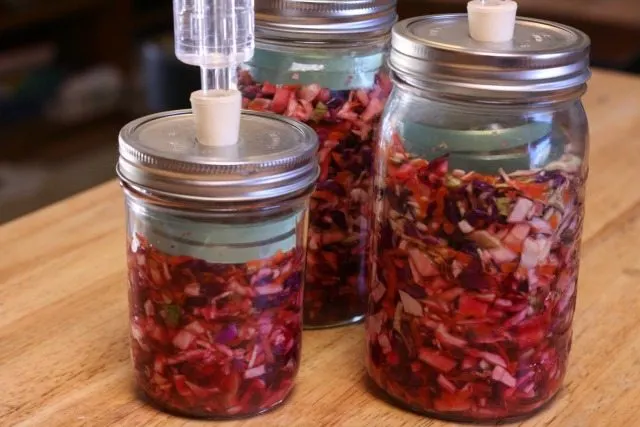
I love playing around with different ferments. My family thinks it’s weird but that’s okay. I have a slaw recipe that I learned from a friend from Kenya and I wondered what it would taste like as lacto-fermented sauerkraut. It’s tastes great.
My family isn’t big slaw or sauerkraut. When I make this slaw I have to be careful to only make what I can eat in a few days. But since it ferments just fine I can make a bigger batch and keep in the refrigerator for several weeks. It might last longer than that but I go through the batch in just a couple of weeks.
We call it rainbow kraut since it’s not really sauerkraut. It’s fermented cabbage, both green and red cabbage, with shredded carrots and beets with a bit of chopped apple. Be careful not to put a lot of apple since the sugar in the apple can ferment faster than the vegetables.
I’m not going to give exact measurements because I don’t want you having to grate two and a half carrots to the get measurement that I got from two carrots. Your sauerkraut will turn out just fine without the exact measurements. It’s how people cooked for thousands of years.
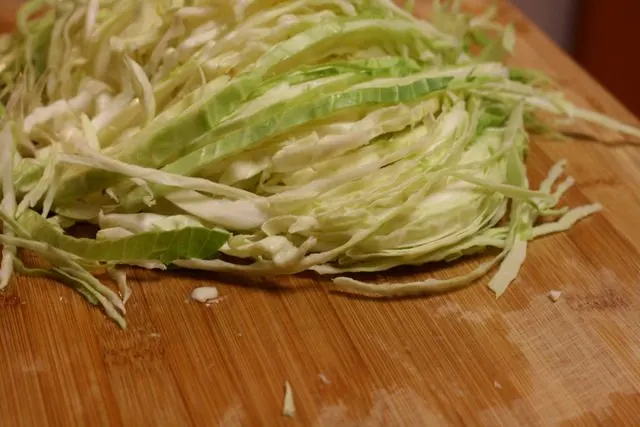
I like to shred the cabbages first
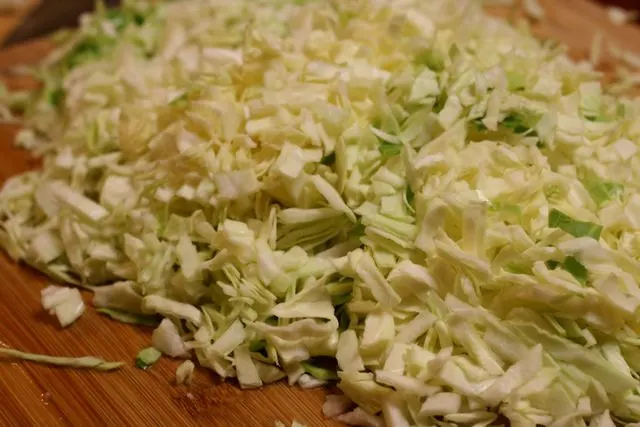
Then chop them. This really helps to get pretty small pieces.
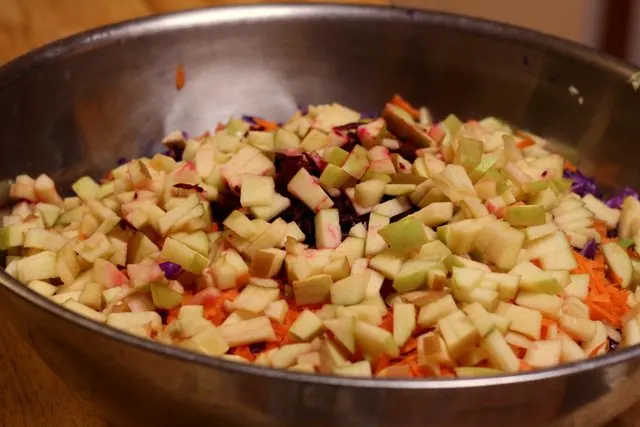
I put everything in a large bowl and salt it. I weigh the bowl first and adjust the scale back to zero (with the bowl on it) then I weigh the bowl when it is full. I use 2 tsp salt for every pound of sauerkraut.
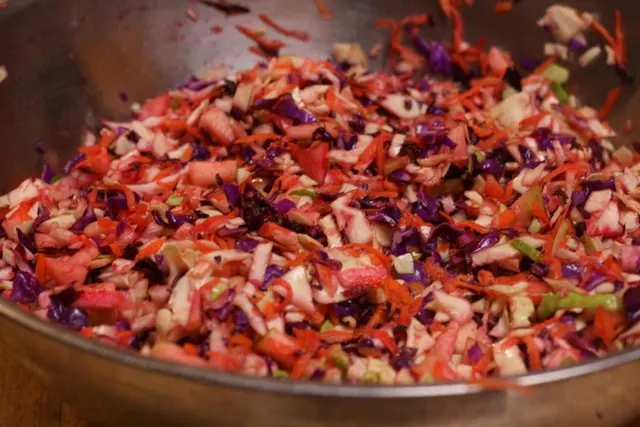
Then I use my hands to mix it all together, crushing some of the vegetables as I mix. I cover it with a towel and let it sit for a couple of hours.

After a couple of hours, I put it in wide mouth canning jars, press it down to make sure there is liquid coming up over the kraut, put the fermenting lids on and set them in a cool dark place for 5-7 days. I really like the Easy Fermenter lids, but also have the Fermentools lids and they also work well as long as no one bumps the airlock.
When they’re done fermenting, I store replace the lids with plastic mason jar lids and store them in the refrigerator.
If you’re new to making and eating fermented foods you’ll want to just eat a few spoonfuls a day at first. The bacteria in homemade fermented sauerkraut is very good for your gut, but too much at once can lead to some temporary tummy issues.
The Herbal Academy has a fantastic fermentation course available. You can learn how to make mead, herbal beer and wine, water kefir, and fermented foods.
I have a set of worksheets I print each year to keep track of what I’ve preserved. You can get the worksheets emailed to you by filling out the form below.
Lacto-fermented Rainbow Kraut

Lacto fermented rainbow kraut is a fun and tasty twist on classic sauerkraut.
Ingredients
- 1/2 a head of green cabbage (finely chopped)
- 1/5 head of purple cabbage (finely chopped)
- 2 grated carrots
- 1 grated beet
- 1 chopped apple (you need a firm apple like gala or pink lady)
- 2 tsp per pound of vegetables non-iodized salt (I really like Himalayan salt for fermenting)
- wide mouth quart mason jars
- fermenting lid
Instructions
- Chop the red and green cabbage very fine.
- Grate the carrots and beet
- Chop the apple
- Put all the prepared produce in a large bowl and sprinkle two teaspoons of salt for every pound of produce over it.
- Use your hands to mix and gently crush the produce.
- Cover with a cloth for several hours.
- Put into clean wide mouth jars and put fermenting lids on (or whatever you use for your fermenting).
- Put in a cool dark place for 4-5 days. Then remove the lids and put a plastic mason jar lid on.
- Store in the refrigerator.
- Enjoy!
Recommended Products
As an Amazon Associate and member of other affiliate programs, I earn from qualifying purchases.
-
 Easy Fermenter Wide Mouth Lid Kit: Simplified Fermenting In Jars Not Crock Pots! Make Sauerkraut, Kimchi, Pickles Or Any Fermented Probiotic Foods. 3 Lids(jars not incld), Extractor Pump & Recipes
Easy Fermenter Wide Mouth Lid Kit: Simplified Fermenting In Jars Not Crock Pots! Make Sauerkraut, Kimchi, Pickles Or Any Fermented Probiotic Foods. 3 Lids(jars not incld), Extractor Pump & Recipes -
 Ball Mason 32 oz Wide Mouth Jars with Lids and Bands, Set of 12 Jars.
Ball Mason 32 oz Wide Mouth Jars with Lids and Bands, Set of 12 Jars. -
 Redmond Real Salt - Ancient Fine Sea Salt, Unrefined Mineral Salt, 16 Ounce Pouch (2 Pack)
Redmond Real Salt - Ancient Fine Sea Salt, Unrefined Mineral Salt, 16 Ounce Pouch (2 Pack)
Here are some other sauerkraut recipes and ways to incorporate sauerkraut into your meals.
Sauerkraut with Fennel and Caraway Seeds from Nitty Gritty Life
Eat Sauerkraut With Pork from Learning and Yearning
10 Ways to Use Sauerkraut from Homespun Seasonal Living
How to Store and Care for Vegetable Ferments by Homestead Honey
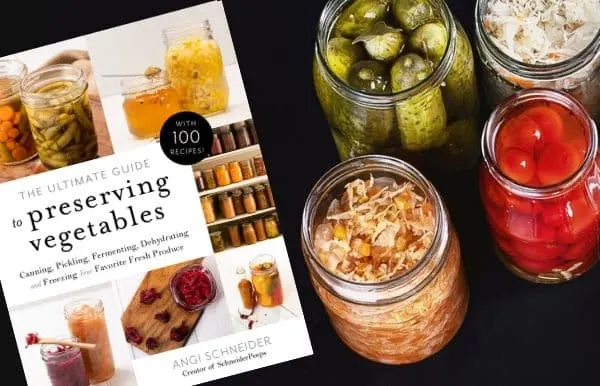
The Ultimate Guide to Preserving Vegetables
If you you’re looking for more preserving inspiration, I know you’ll love The Ultimate Guide to Preserving Vegetables. In this book I share how to can, dehydrate, freeze and ferment almost every vegetable. I also share 100 favorite recipes for preserving the vegetables in fun way that will save you time and money later. Get your copy here. Get your copy here.
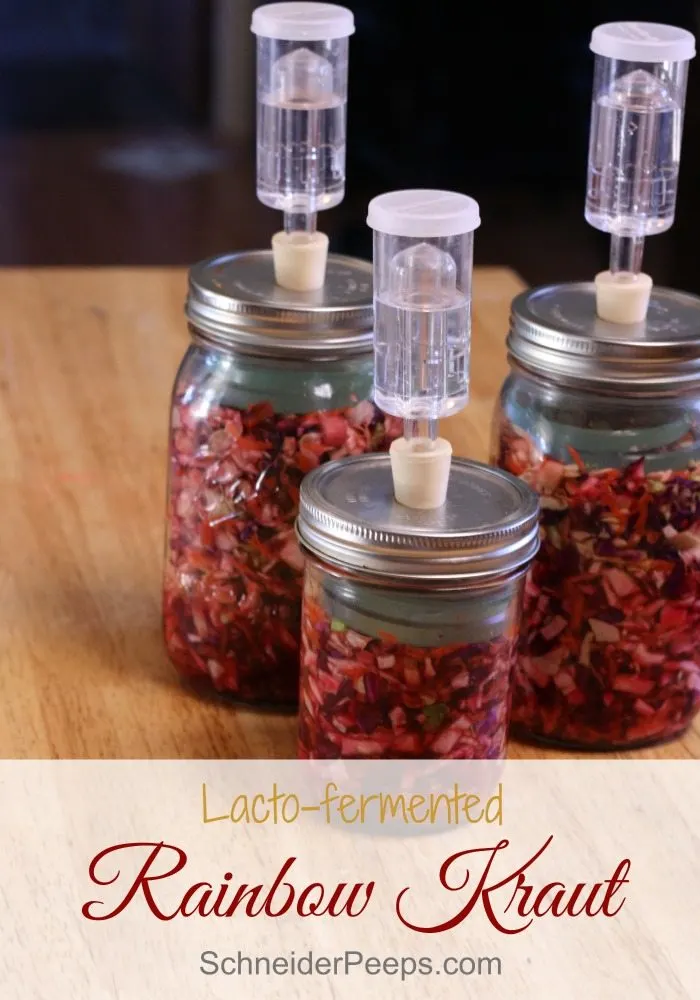
What have you been fermenting?

Angela Tanner
Saturday 17th of April 2021
When I make mine like that I put in every root vegetable I can think of, I’ll make several quarts at the time because I have family members and friends that always want it.
Angi Schneider
Wednesday 21st of April 2021
That's a great idea!
Alex
Monday 10th of June 2019
Is there no fluid added?
Angi Schneider
Tuesday 11th of June 2019
There's no need to add extra fluid. The fluid in the cabbage, beets, and carrots is released when you salt them. That's the fluid in the jar.
Alina
Wednesday 15th of August 2018
Did you use fresh beets or cooked beets?
Angi Schneider
Thursday 16th of August 2018
I use fresh beets
Brian
Wednesday 1st of April 2015
Good afternoon: I'm trying to get involved with fermented foods any recommendations, I've doing some reading on the subject, any suggestions On getting started.
Angi Schneider
Thursday 2nd of April 2015
Hi Brain, I'm just starting our fermenting journey but I've really learned a lot from the book, Fermented Vegetables by Christopher and Kristen Shockey (http://amzn.to/1IU1hOo).
Charissa
Friday 27th of March 2015
Now this recipe looks delicious! I will have to try it next. I just made some slaw with green cabbage, apple, oranges and a little ginger which is still sitting on my counter. I've never used those lids, do you like them?
Angi Schneider
Friday 27th of March 2015
Yum! I bet ginger is so good in a fermented slaw. I do like these lids. I haven't fermented with anything else so I can't compare it to anything, but I love that I can do smaller batches and use my mason jars. This is really important to me since I'm still trying to figure out what ferments my family will enjoy.